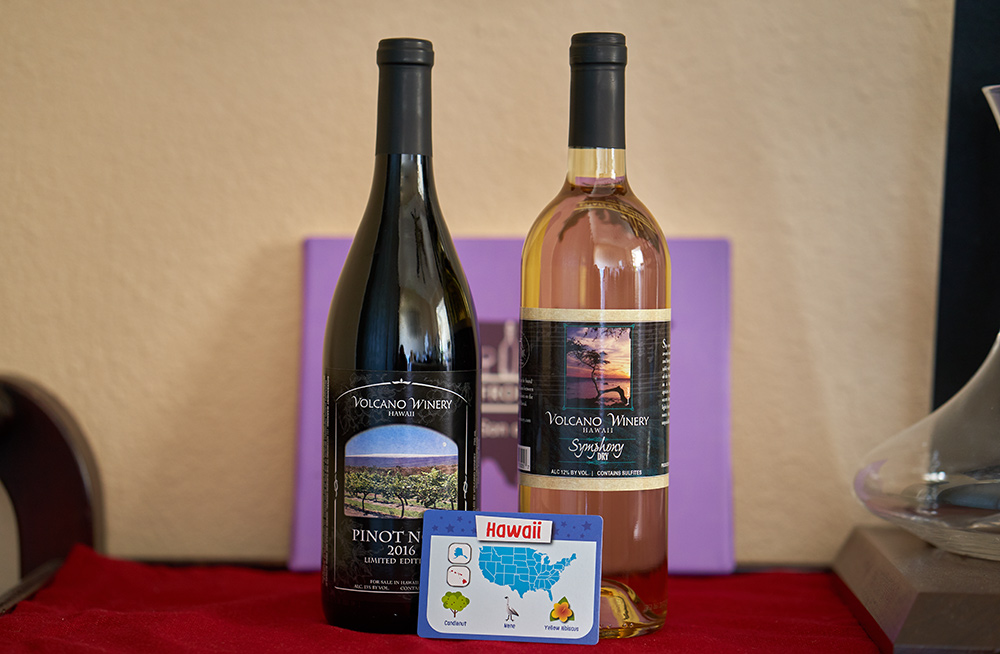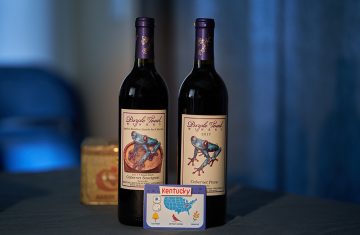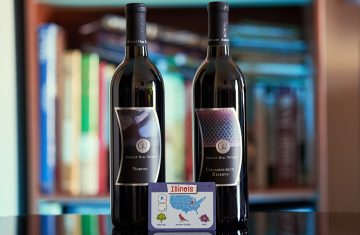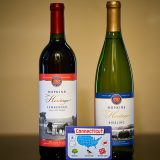When I think of Hawaii, my mind immediately thinks of Kona coffee. I’ve been in love with it for nearly 20 years, and every time I come back from Hawaii my suitcases are overflowing with bags of it. I have to admit, seeking out locally made wines never even crossed my mind there before.
Hawaii, the 50th state, is about as far from your standard wine region as you can get. It’s technically in Oceania, but is considered part of North America due to the fact that it’s a state of the US. It’s mainly a tropical climate, but because it sits on an active volcano, there is plenty of higher elevations to plant vines at cooler temperatures.
Depending on where you look, there are either 3 or 4 current wineries in Hawaii, and like most tropical locations fruit based wines makes up a large portion of the local wines. More typical wine grapes would have a hard time surviving in its hot and humid temperatures, but this has certainly not stopped people from succeeding. Hybrid grapes designed to handle heat and humidity are what local winemakers seem to be focusing on, though it seems they have also found a way to get cooler climate noble grapes to work as well. For my Hawaii tasting, I grabbed one of each from local favorite Volcano Winery.
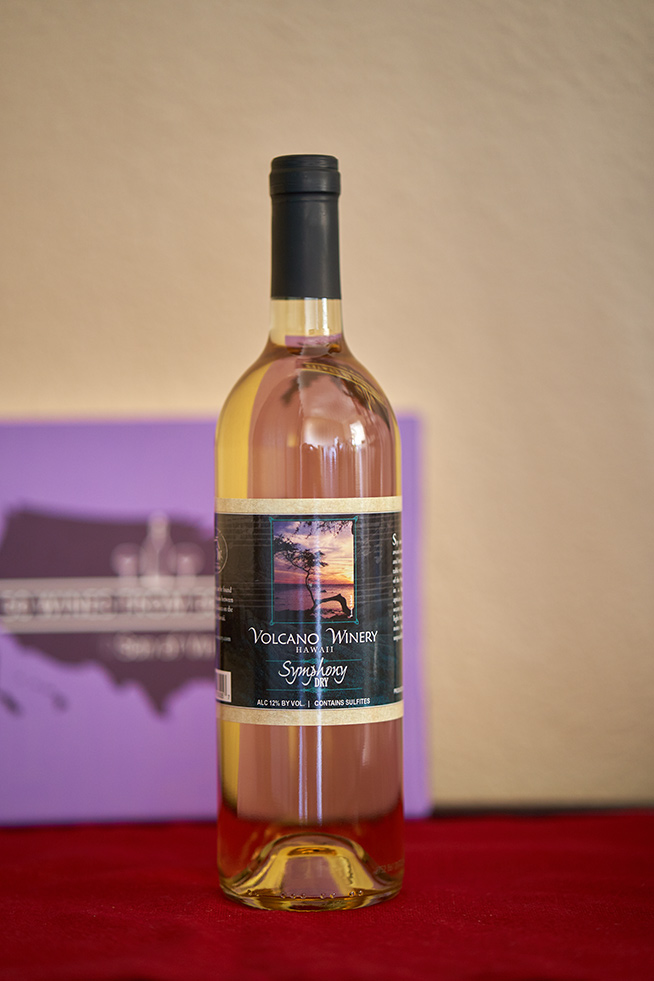
For my first wine, I chose their Symphony Dry white wine. I honestly had never heard of Symphony before. From Wikipedia, Symphony is a crossing of the vinifera varieties Muscat of Alexandria and Grenache gris created by Dr. Harold Olmo. Volcano Winery’s founder Lynn “Doc” McKinney started the winery in 1986 by planting Symphony vines, so it’s obviously an important hybrid grape for this winery. I actually found this white wine quite refreshing. It’s very floral, with heavy citrus, peach, and apple characteristics. It’s acid was medium to mild and felt very light bodied. Though it’s a Muscat hybrid, this wine actually reminded me of a light Chenin Blanc for some reason. I enjoyed this one on one of the hottest days so far here in Los Angeles.
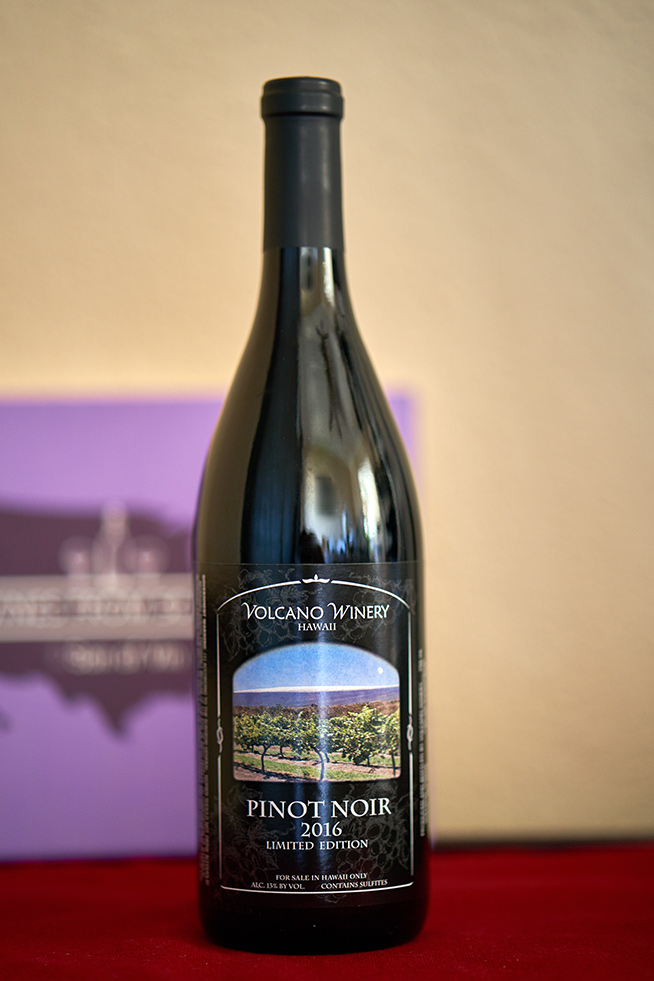
In 2006, a portion of Volcano Winery’s Symphony vineyard burned. Instead of being sour about the situation, they took this an opportunity to try different varietals in this section. My second wine struck me as a wild card coming from Hawaii. Pinot Noir typically grows better in cooler climates, so I was wondering how they could pull off growing such a thin skinned grape in a more tropical climate. I’m guessing their 4000ft winery elevation is what makes this one even possible. Their 2016 Limited Edition Estate Pinot Noir felt a bit fuller bodied than what I typically see in Pinot Noirs. It was still a medium bodied wine, but just dialed up a bit. Not sure if this was the climate or just my amateur skills getting the best of me. It’s appearance was thin like you’d expect from Pinot Noirs with a great balance of medium acids and tannins with black cherries and a bit of a mossy aroma. It’s truly amazing to me that they are able to make a solid Pinot Noir in Hawaii. Kudos to them!
You can see a list of states I’ve reviewed on my main 50 Wines From 50 States page.

